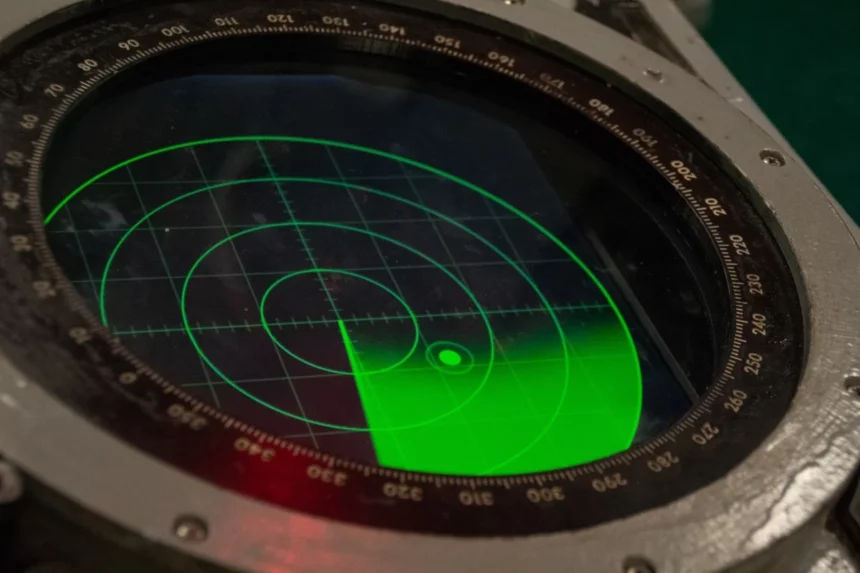Chinese researchers, led by Professor Ning Ning at the University of Electronic Science and Technology of China (UESTC), have developed an ultra-fast ADC chip that enhances electronic warfare capabilities by reducing signal processing delays. This chip, inspired by EEG monitors, can differentiate between target signals and noise, thus saving over 30% in power consumption. The chip is based on a 28-nanometer process, making it cost-effective and mass-producible. This development signifies a shift in China’s military strategy from defense to offense, highlighting advancements in China’s electronic warfare and communication technologies
Read more below.
China’s new ultra-fast chip could double the pace of electronic warfare: research team
In electronic warfare, military forces must first convert detected electromagnetic waves, which are analogue signals, into a digital format composed of zeros and ones.
They must then analyse the digital signals on computers to be able to perform tactical actions such as identification, localisation, deception or suppression of enemy defences.
To avoid missing signals, ADCs must work at full capacity, collecting billions of samples per second and generating massive amounts of data.
This process “severely restricts the response speed of equipment and leads to high power consumption and severe heat generation in advanced electronic warfare receivers”, Ning and his colleagues wrote in a peer-reviewed paper published in the Chinese academic journal Microelectronics earlier this month.
“In the field of electronic warfare receivers, the industry is still focused on reducing signal processing delay and enhancing equipment response speed by increasing the conversion rate of ADCs, and reducing equipment power consumption by lowering the power consumption of ADCs,” they wrote.
“However, the design difficulty of ultra-high-speed, low-power ADCs has increased dramatically, while the improvement in equipment performance has become increasingly marginal.
“This path has reached its limit.”
Ning is also the director of an application-specific integrated circuit (ASIC) innovation laboratory, jointly set up by UESTC and Chinese telecoms giant Huawei Technologies.
The joint laboratory was set up in May last year with 23 million yuan (US$3.17 million) from Huawei. It is dedicated to research and technology transfer in the field of ultra-low power analogue-digital mixed integrated circuits, according to UESTC’s webpage.
Huawei and Ning’s team have collaborated on intelligent detection systems for sensing and transmission, resulting in multiple achievements such as lightweight, high-accuracy sensing detection chips, algorithms and hardware systems.
For the ultra-fast ADC, Ning’s team drew inspiration from electroencephalogram (EEG) monitors, which measure electrical activity in the brain.
In real electronic confrontations, radar signals are usually intermittent like brain signals. Most of the time, the brain sensors receive just noise.
To save power, some wearable EEG monitors use event-triggered ADCs to simplify signal conversion and feature extraction.
This was the inspiration for Ning’s team to develop the world’s first reported smart ADC for military applications.
This chip can analyse analogue signals before they are converted into digital signals, determining whether they are target radar signals or noise.
It only issues alerts and begins full-power analogue-to-digital conversion when a radar signal is confirmed.
“[Therefore] power consumption savings of over 30 per cent can be achieved consistently under various environments,” Ning’s team wrote in the paper, describing it as “groundbreaking”.
The chip is based on a mature 28-nanometer process, which makes it cost-effective and easy to mass-produce.
In the first half of this year, China exported nearly 260 billion mature-process chips, according to Chinese customs data – an increase of more than 25 per cent.
With the support of advanced technology, the Chinese military has started to shift from defence to offence.
Chinese state media said it was the first time the Chinese military had carried out operations in sensitive waters near North America, highlighting its expanded information support abilities.
Instead of strategic missiles, the Chinese bombers were carrying large electronic warfare pods under their wings, according to video footage released by the US military, which intercepted the warplanes along with Canadian fighters.
Some military experts say the rapid growth of China’s electronic warfare abilities is driven by a booming communication industry.
According to the latest official data, China has built nearly 4 million 5G base stations, or 20 times more than the United States.
Despite US sanctions, Huawei recorded 145.5 per cent growth in profit last year because of significant breakthroughs in microchips and other cutting-edge technologies, including the world’s first smartphone that can connect to a satellite 36,000km (22,400 miles) away without an external antenna.
The company stands as the top employer for Ning’s students after graduation, according to the team’s website.
Every year, around 1.6 million Chinese university students graduate in telecommunication engineering, more than any other major.
Stephen Chen
Source: South China Morning Post







